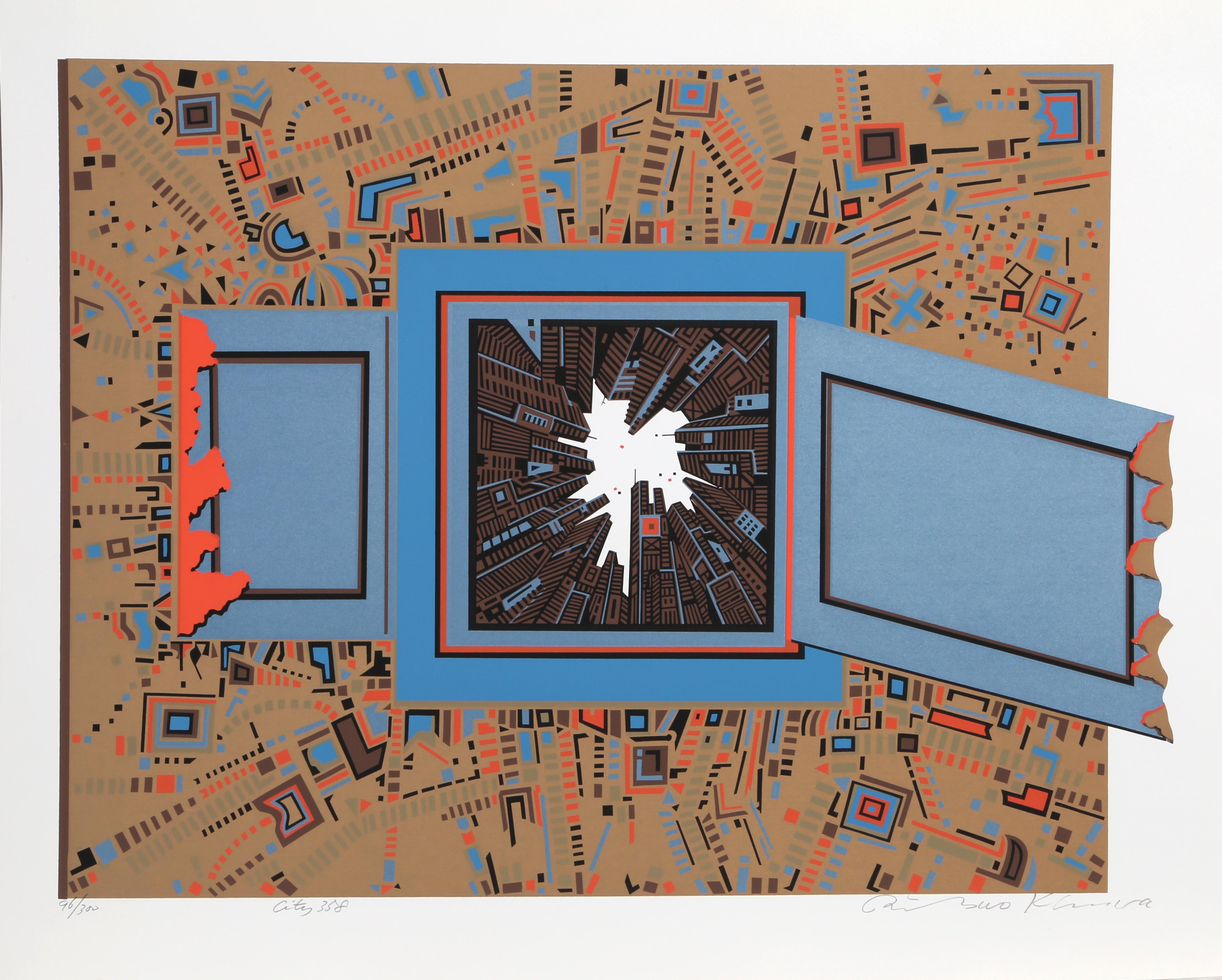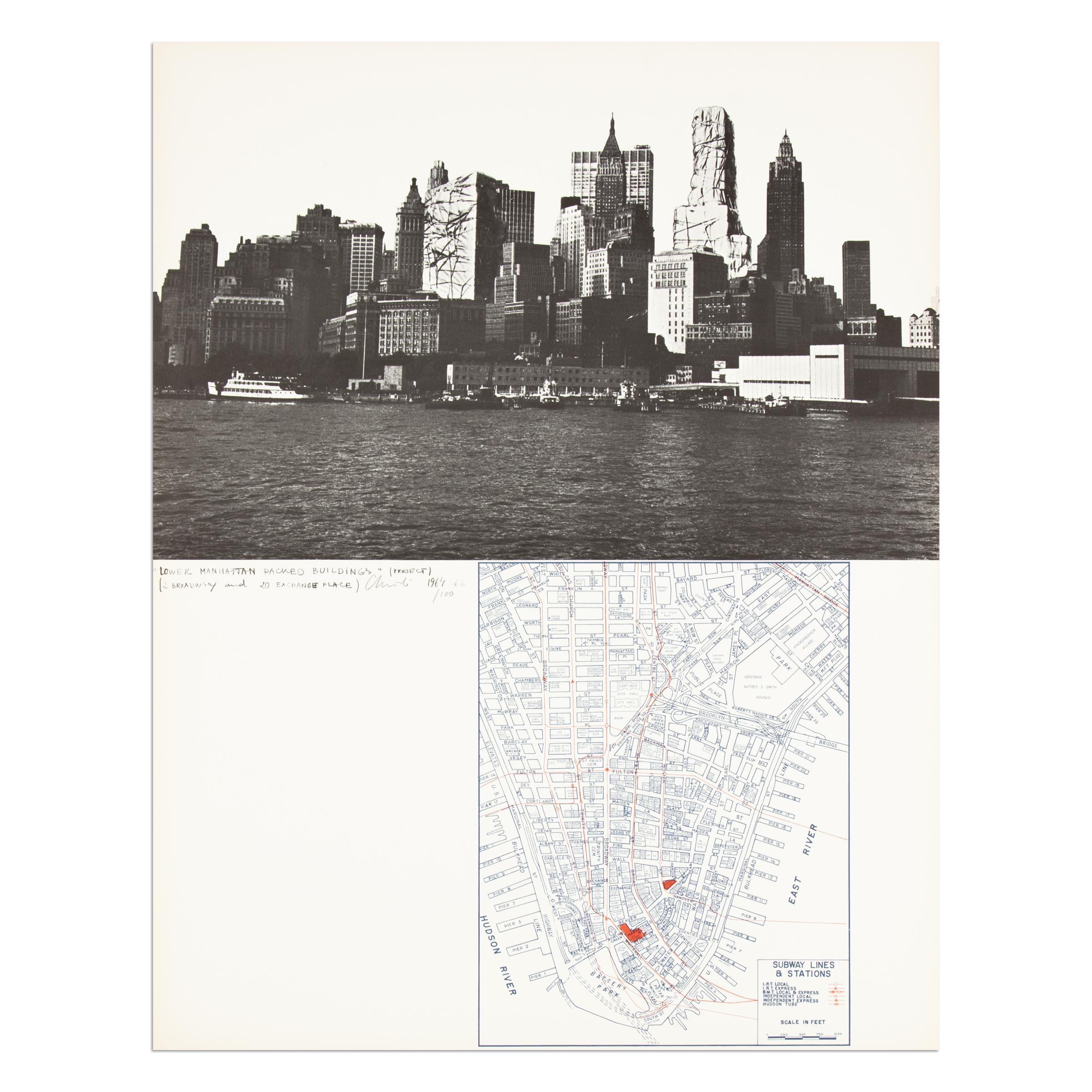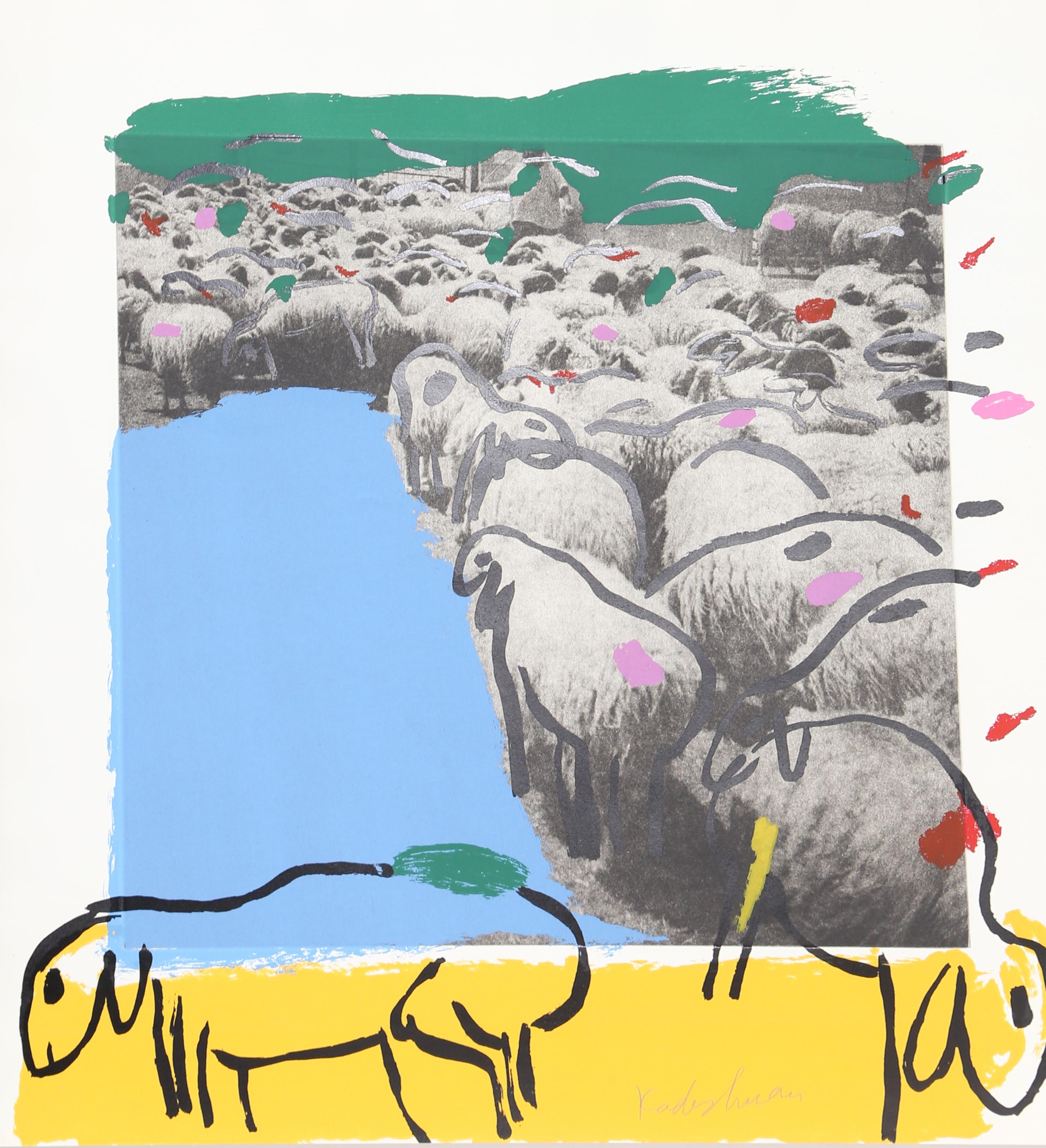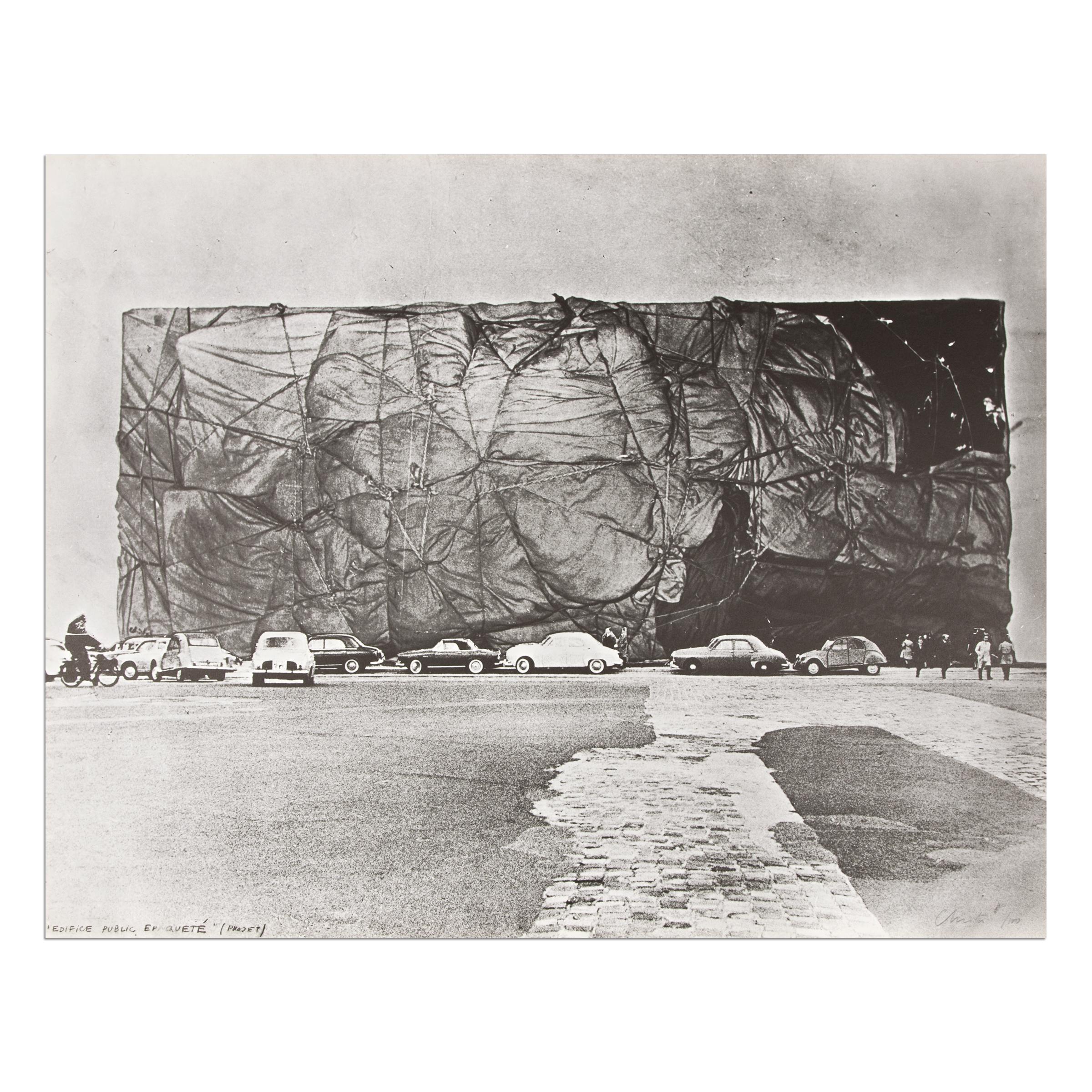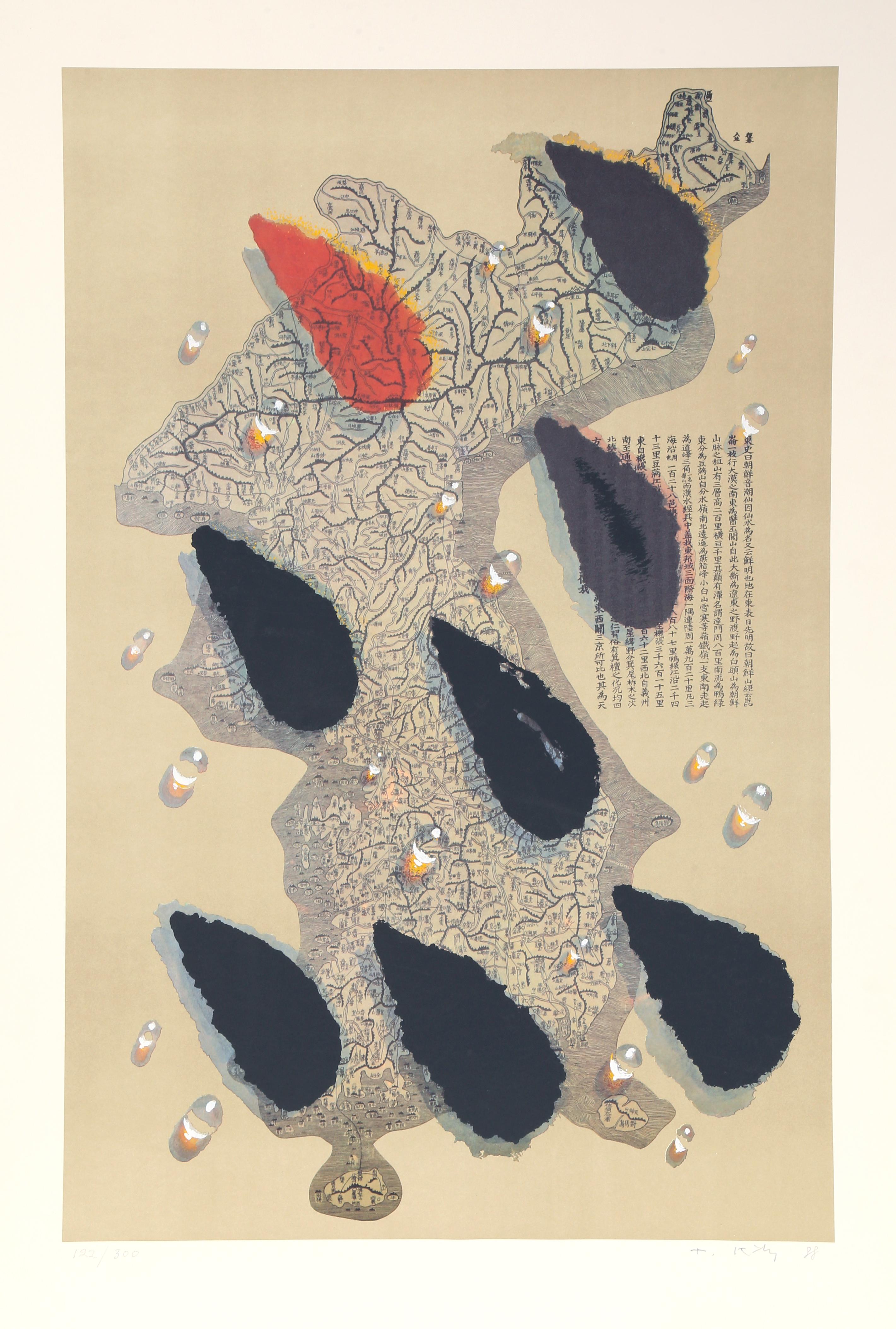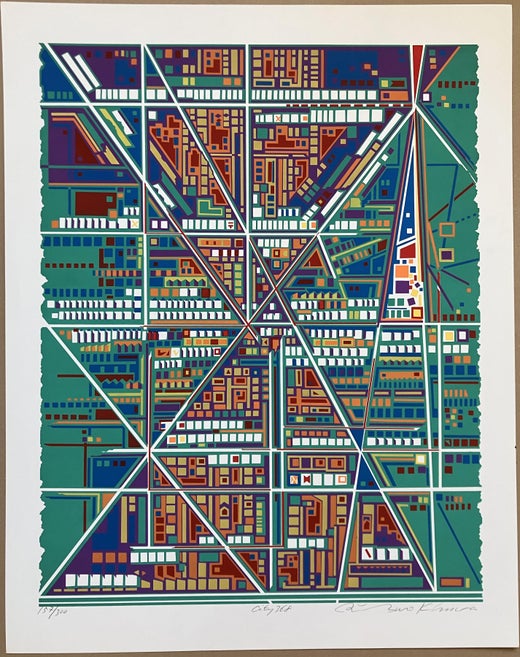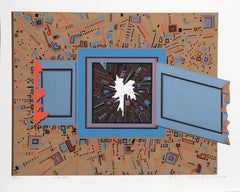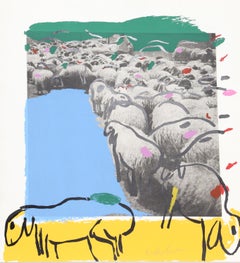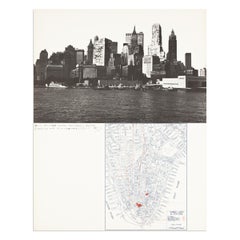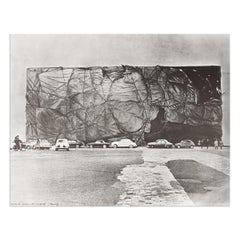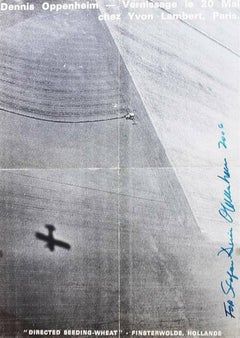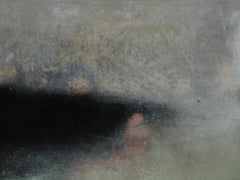Items Similar to City 57, Geometric Serigraph by Risaburo Kimura
Want more images or videos?
Request additional images or videos from the seller
1 of 6
Risaburo KimuraCity 57, Geometric Serigraph by Risaburo Kimura1969
1969
About the Item
Artist: Risaburo Kimura, Japanese (1924 - )
Title: City 57
Year: 1969
Medium: Silkscreen, signed in pencil
Edition: 6/75
Size: 25 x 19 in. (63.5 x 48.26 cm)
- Creator:Risaburo Kimura (1924, Japanese)
- Creation Year:1969
- Dimensions:Height: 25 in (63.5 cm)Width: 19 in (48.26 cm)
- Medium:
- Movement & Style:
- Period:
- Framing:Framing Options Available
- Condition:In very good condition. Minor wear consistent with age and history.
- Gallery Location:Long Island City, NY
- Reference Number:1stDibs: LU46610124692
Risaburo Kimura
Risaburo Kimura was born in 1924 in Yokosuka City, Japan, and moved to New York City in 1964. Kimura attended Yokohama University and Hosei University, in Tokyo in 1954 where he studied Philosophy. His work has been featured in both solo and group exhibitions at such venues as the Brooklyn Museum, MoMA, the Guggenheim Museum, and the National Museum of Modern Art (Kyoto, Japan). Other venues of premier exhibitions include: the Japanese Art Festival in the Museum of Cherrusky, Paris and in Brazil and Italy; Trends in Contemporary Japanese Art at the National Museum of Modern Art in Kyoto, Japan; Biennial of Prints in Tokyo, Japan; Modern Prints of Japan in Brussels, Belgium; Palace of Fine Arts in Mexico City; and the Japanese Arts Festival at the Guggenheim Museum in New York. Kimura's work is collected in permanent museum collections including: Oklahoma Art Center; Long Island University; The Museum of Modern Art in New York; The Brooklyn Museum; Kyoto City Hall, Japan; I.B.M. World Trade Corporations Headquarters N.Y.; Cincinnati Art Museum in Ohio; National Museum of Modern Art in Kyoto Japan; Museo La Tertulia Cali in Colombia, South America; The Bank of America in New York; and The Museum of Modern Art in New York. Post- sōsaku hanga (creative print movement) artist and master of serigraph technique, Risaburo Kimura has special affinity for big cities, being born close to Tokyo and later living in New York. In the late 1960s, he started his most important series of prints, "Great Cities of the World" series, with well over 400 different renderings of a big city. All of the cities he represented in this series are fictional, and are reduced to masterly use of several colors, and minimalization of architectural elements. One of his best known series is a suite titled "Great Cities of the World", in which he combined silkscreen and lithograph techniques to render the impressions of twenty great cities in the world. The series took him almost three years to finish because Risaburo Kimura drew and hand cut screens by himself. He passed away in 2014 in New York.
About the Seller
4.9
Platinum Seller
Premium sellers with a 4.7+ rating and 24-hour response times
Established in 1979
1stDibs seller since 2014
2,986 sales on 1stDibs
Typical response time: 1 hour
- ShippingRetrieving quote...Shipping from: Long Island City, NY
- Return Policy
Authenticity Guarantee
In the unlikely event there’s an issue with an item’s authenticity, contact us within 1 year for a full refund. DetailsMoney-Back Guarantee
If your item is not as described, is damaged in transit, or does not arrive, contact us within 7 days for a full refund. Details24-Hour Cancellation
You have a 24-hour grace period in which to reconsider your purchase, with no questions asked.Vetted Professional Sellers
Our world-class sellers must adhere to strict standards for service and quality, maintaining the integrity of our listings.Price-Match Guarantee
If you find that a seller listed the same item for a lower price elsewhere, we’ll match it.Trusted Global Delivery
Our best-in-class carrier network provides specialized shipping options worldwide, including custom delivery.More From This Seller
View AllCity 381, Signed Serigraph by Risaburo Kimura
By Risaburo Kimura
Located in Long Island City, NY
Artist: Risaburo Kimura, Japanese (1924 - )
Title: City 381
Year: circa 1971
Medium: Serigraph, signed and numbered in pencil
Edition: 300
Image Size: 19 x 25.5 inches
Size: 2...
Category
1970s Conceptual Landscape Prints
Materials
Screen
City 358, Geometric Abstract Screenprint by Risaburo Kimura
By Risaburo Kimura
Located in Long Island City, NY
Artist: Risaburo Kimura, Japanese (1924 - )
Title: City 358
Year: 1971
Medium: Serigraph, signed and numbered in pencil
Edition: 300
Size: 23 x 28 in. (58.42 x 71.12 cm)
Category
1970s Conceptual Landscape Prints
Materials
Screen
$560 Sale Price
20% Off
Sheep Portfolio 7
By Menashe Kadishman
Located in Long Island City, NY
Artist: Menashe Kadishman, Israeli (1932 - 2015)
Title: Sheep Portfolio 7
Year: 1981
Medium: Serigraph and Etching, signed in pencil
Edition Size: 65, AP 5
Size: 33.5 x 31 in. (85.0...
Category
1980s Conceptual Landscape Prints
Materials
Screen
Waterdrops, Lithograph by Kim Tschang-Yeul
Located in Long Island City, NY
Artist: Tschang-Yeul Kim, Korean (1929 - )
Title: Water Drops
Year: 1988
Medium: Screenprint, signed and numbered in pencil
Edition: 300
Size: 43.5 in. x 29 in. (110.49 cm x 73.66 cm)
Category
1980s Conceptual Landscape Prints
Materials
Screen
City 380, 1971 Serigraph by Risaburo Kimura
By Risaburo Kimura
Located in Long Island City, NY
Artist: Risaburo Kimura, Japanese (1924 - )
Title: City 175
Year: 1971
Medium: Serigraph, signed and numbered in pencil
Edition: AP 30
Image Size: 25.5 x 20 inches
Size: 28.5 x 22...
Category
1970s Conceptual Landscape Prints
Materials
Screen
City 36, Geometric Landscape Serigraph by Risaburo Kimura
By Risaburo Kimura
Located in Long Island City, NY
Artist: Risaburo Kimura, Japanese (1924 - )
Title: City 36
Year: 1968
Medium: Silkscreen, signed in pencil
Edition: AP
Size: 30 x 22 in. (76.2 x 55.88 cm)
Category
1960s Conceptual Landscape Prints
Materials
Screen
You May Also Like
Christo, Lower Manhattan Packed Buildings (Monuments) - Signed Print
By Christo
Located in Hamburg, DE
Christo (American-Bulgarian, b. 1935)
Lower Manhattan Packed Buildings (2 Broadway and 20 Exchange Place, from Monuments), 1968
Medium: Offset and screen print on Bristol board
Dimen...
Category
20th Century Conceptual Landscape Prints
Materials
Offset, Screen
Christo - Edifice Public Epaqueté, Project (from Monuments) - Signed Print
By Christo
Located in Hamburg, DE
Christo (American-Bulgarian, b. 1935)
Edifice Public Epaqueté, Project (Ecole Militaire de Paris, from Monuments), 1968
Medium: Screen print on Bristol board
Dimensions: 70 × 54.5 cm...
Category
20th Century Conceptual Figurative Prints
Materials
Screen
Yvon Lambert Gallery Poster (Hand Signed and Addressed by Dennis Oppenheim)
By Dennis A. Oppenheim
Located in New York, NY
Dennis Oppenheim
Directed Seeding -Wheat, Historic Yvon Lambert Gallery Poster (Hand Signed and Addressed by Dennis Oppenheim), 1969
Offset lithograph poster. Hand signed, inscribed. Postmarked and addressed to Oppenheim's dealer, John Gibson
23 × 16 inches
Hand Signed and inscribed by Dennis Oppenheim lower right in blue marker in 2006, hand addressed by Dennis Oppenheim in 1969 in red marker
Unframed
This is an extremely uncommon vintage poster/mailer announcing the May 20th, 1969 opening reception (Vernissage) for the exhibition of works by American conceptual art pioneer Dennis Oppenheim at the Yvon Lambert Gallery in Paris. The poster is historic in that it was originally mailed to John Gibson, the East 67th Street dealer, who famously gave Dennis Oppenheim his first New York exhibition in 1968, and it is hand addressed to Gibson, bearing the original Paris, France postmark of 1969. It is, exceptionally, hand signed and dedicated by Dennis Oppenheim to a collector who acquired the poster from John Gibson's collection, and then secured Dennis Oppenheim's autograph in 2006, making this an especially valuable collectors item.
More information about the project from the Tate Gallery archives, which acquired the work:
This work brings together two interventions Oppenheim created on a field owned by farmer Albert Waalken in Finsterwolde, north-eastern Holland, in 1969. It comprises four distinct elements mounted on board: a colour photograph of a wheatfield being sowed by a tractor in parallel curving lines seen from high up; a negative image in black and white of a map of the area of Finsterwolde onto which two sections of text have been collaged; and two black and white aerial photographs of the same field being traversed by a tractor cutting an X into the wheat. The first two elements relate to the action Directed Seeding. For this the field was seeded according to a line plotted by following the road from the village of Finsterwolde, the location of the field, to Nieuweschans, another village where the farmer’s storage silo for wheat was located. Oppenheim reduced this curved line by a factor of six in order to direct the trajectory of seeding. The tractor then carved a series of curved parallel lines on the surface of the field as it dug up earth and scattered seed. From an aerial perspective the patterning of parallel lines may be viewed as a form of line drawing on the landscape. The precise location of the field and the silo are indicated on the map, showing the trajectory of the road. The two sections of text collaged onto the upper portion of the map briefly describe the two interventions. Explaining the action Cancelled Crop, the artist wrote:
In September the field was harvested in the form of an X. The grain was isolated in its raw state, further processing was withheld. This project poses an interaction upon media during the early stages of processing. Planting and cultivating my own material is like mining ones own pigment (for paint) – I can direct the later stages of development at will. In this case the material is planted and cultivated for the sole purpose of withholding it from a product-oriented system. Isolating this grain from further processing (production of food stuffs) becomes like stopping raw pigment from becoming an illusionistic force on canvas. The esthetic is in the raw material prior to refinement, and since no organization is imposed through refinement, the material’s destiny is bred with its origin.
(Quoted from artist’s statement in Tate acquisition file.)
Directed Seeding and Cancelled Crop are two separate works, brought together in several different versions of which Tate’s is one. The collage presents three ways in which human action may marks the land. For the first two, agricultural machinery is used to create straight lines, in the process of harvesting as in the X of Cancelled Crop, or curved lines, during the process of planting seed in the contours photographed for Directed Seeding. The map shows a third (and more ancient) way of marking the land, through the construction of roads. The use of the landscape – natural, industrial or urban – as a canvas on which to act is typical of Oppenheim’s work in the late 1960s and early 1970s. In a related action, Directed Harvest, 1966 (Tate T07590) and Directed Harvest 1968 (Kröller-Müller Museum, Otterlo, Netherlands), the artist caused a field to be harvested in linear patterns which he then had photographed in its progressive stages. In Reverse Processing: Cement Transplant, East River, NY, 1970, 1978 (Tate T07591) Oppenheim drew large crosses on the roofs of barges transporting raw cement that he found moored on the New York East River banks. All these works centre on process as an agent of change and utilise materials, elements and locations on which the artist can have no permanent claim, making them deliberately ephemeral. Such actions as seeding a crop and harvesting it several months later operate within time parameters dependent on the cycles of the seasons rather than the will of man, mixing human processes with those of nature. Oppenheim’s analogy between the prevention of a crop from entering the food chain and the halting of the expressive, ‘illusionistic’ force of paint deconstructs the sophisticated processes of art-making and the food industry to the elemental notion of making simple marks on the environment. In this way, the artist highlights contemporary man’s dependency on complex chains...
Category
1960s Conceptual Abstract Prints
Materials
Offset, Lithograph
Tim Southall, Destination Unknown, Contemporary Art Print, Affordable Art
By Tim Southall
Located in Deddington, GB
Tim Southall
Destination Unknown
Limited Edition Print
Edition of 45
Image Size: H 15cm x W 20cm
Sheet Size: H 26cm x W 32cm x D 0.1cm
Sold Unframed
Pleas...
Category
21st Century and Contemporary Conceptual Abstract Prints
Materials
Paper, Etching, Monoprint
To The River
By Ross Racine
Located in New York, NY
edition of 5
available unframed
image size: 23 1/2" x 31 1/2"
Ross Racine is an artist living in Montreal (Quebec), Canada, and New York. Racine's works are drawn freehand on a ...
Category
21st Century and Contemporary Conceptual Landscape Prints
Materials
Archival Paper, Archival Pigment
$1,650
Primrose Hill: The View
By Jennie Ing
Located in Deddington, GB
Jennie Ing
Primrose Hill: The View
Limited Edition Print
Edition of 40
Image Size: H 23cm x W 33cm
Signed
Sold Unframed
Please note that in situ i...
Category
2010s Conceptual Figurative Prints
Materials
Paper, Linocut
Recently Viewed
View AllRead More
Romare Bearden’s Humanity Infuses His Bright, Bold Art
Through collage, painting and printmaking, the artist foregrounded Black life in America in revolutionary new ways.
Chryssa’s 1962 Neon Sculpture Was Way ahead of the Art-World Curve
By working with lettering, neon and Pop imagery, Chryssa pioneered several postmodern themes at a time when most male artists detested commercial mediums.
